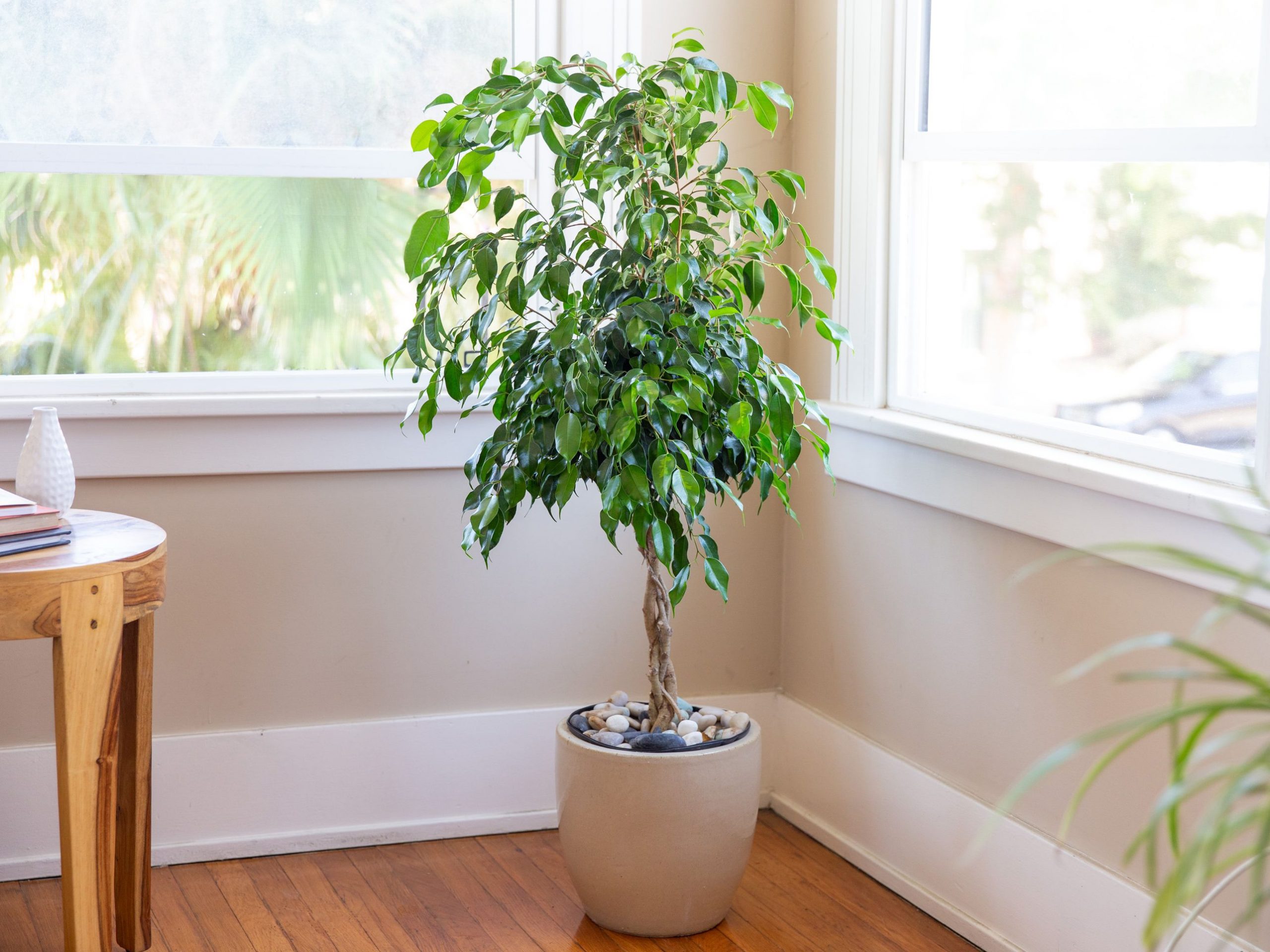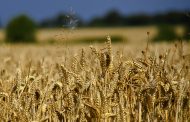Ficus is loved by many flower growers – for many ornamental varieties and varieties, for unpretentiousness, for interesting flowering, for good growth rate, and high adaptability. And, according to beliefs, ficus in the house brings good luck and prosperity – a great option for houseplants.
Kyiv. Ukraine. Ukraine Gate – April 12, 2021 – Agriculture
More than 50 species of this culture are used in indoor floriculture! You can choose to your taste a plant compact or tall, of different types of growth, with wide large glossy or thin small leaves, with leaf blades of different colors, shapes, and sizes on short or long petioles…
But not always a bright bush with a thick crown, brought from the store or greenhouse, will feel good in a new place. Yes, many owners of one of the most popular species of ficus, Benjamin’s ficus, complain that it can often turn yellow and fall off the leaves. Owners of ficus with hard leathery leaves (rubber, microcap, etc.) sometimes notice that they begin to lose turgor, wither or dry from the edges and tips. Sometimes the problem does not end with the darkening and flying of the leaves – then the branches and even the trunk of the ficus dry out.
What are the troubles and why can happen to your favorite houseplant? And most importantly – how to eliminate their causes and return the tree to its former decorativeness? Let’s understand together why ficus dries or flies in the apartment.
A sharp change in conditions
Some ficus is just very capricious about growing conditions.
Of course, each species of ficus has its own requirements for housing conditions, but there are “capricious record holders.” The main “whim” in this sense is the already mentioned ficus Benjamin, which response to massive leaf fall to literally any changes.
Ficus growers even joke about it: “If you bought a ficus Benjamin, you do not need to ask if he will drop leaves in your apartment, you need to ask – when exactly and how quickly he will do it.”
The light from the window in the spring became brighter or you opened the window wide, turned on or off the batteries (changing the humidity), in the fall it became cooler in the apartment, the child carelessly touched the plant during watering or you moved the pot to a nearby window sill for convenience – and here’s a tree just pleased you with a lush openwork crown of variegated leaves, stands almost bald.
Equally, demanding ficus includes sacred ficus, rough ficus, isosceles ficus, Palmer’s ficus, ficus microcarpa.
In most cases, such a plant will soon sooner or later grow leaves again. But not always.
So if you own an apartment where windows with drafts are constantly open, children and animals run around, touching plants, you often forget to water houseplants on time or regularly rearrange them in the room – maybe you should just replace them with more unpretentious and resistant to change? For example, ficus rubber, ficus lyre-shaped, ficus ivolistym.
Heat and dryness
This is probably the most obvious reason why ficus leaves can dry out.
Most members of this genus require a fairly cool ambient temperature (especially in winter and summer is usually not higher than 20-25 ° C), constantly moderately moist soil, mandatory regular spraying of the crown, or wiping the leaves with a soft damp cloth.
Direct sunlight, dry air, and soil, underfilling, location in winter near heating sources – all these are almost guaranteed to lead to wilting and drying of leaves and young shoots of such plants. Leaf-blades often in this case begin to dry from the edges or tips.
Overflow
You may be surprised, but for ficus with thin leaf, blades overflow can be as unpleasant as underfilling!
Ficus will persistently “demand” from the owner of stable humidity. Do you water regularly? Have you arranged the humidity in the pot? Watered with water of the wrong temperature? Get yellowing, darkening, and flying leaves.
Regular watering can lead to root rot – you know, the aboveground part of the plant after that is unlikely to be healthy and decorative, the leaves will begin to wither and fall off.
Too bright or dim
As we have already mentioned, some ficus is exclusively shade-loving plants. Being on the brightest window sills in direct sunlight, they will feel unwell, responding, including discoloration and drying of leaf blades, and even getting real sunburn.
Cold
Remember – comfortable cool conditions for growing ficus are not identical to the concept of “need cold”.
Even the most shade-tolerant ficus, which does not like heat, will react to the supercooling of the roots, including drying and leaf fall. This is especially dangerous with regular watering when the roots not only get hypothermia but also begin to rot. And such hypothermia, for example, can begin at a temperature that is below 16-18 ° C.
This may also be relevant for potted plants that stand on a cold (eg, stone) floor or window sill, where frequent drafts. A variant of correction of such situation – laying under a pot with a ficus of felt, wooden or polyfoam “substrate”.
In any case, before you buy a ficus, be sure to study its requirements for housing conditions – including temperature!
Soil depletion
Ficus leaves can weaken, turn yellow, dry out and fall off for another reason – the plant lacks nutrition.
Ficus does not require frequent regular abundant fertilization, but any soil is depleted over time, so from time to time and this unpretentious plant would be good to feed a liquid complex fertilizer.
If the plant regularly dries the tips of the leaves, the opposite situation is possible – you are overfeeding it!
It is also possible that the ficus has been sitting in a small pot without reloading for years – and it lacks not only fresh nutritious soil, but also space for the root system in general. We are not talking about good health here.
Ficus fell ill
Root rot, soot, cercosporosis, anthracnose, botrytis – diseases that can “pick up” your ficus in the presence of improper care.
Along with all other signs, the presence of a fungal or bacterial pathogen may also indicate dry and wet spots on the leaves, blackening or yellowing, falling, withering, and drying of leaves, stems, and branches.
To prevent this from happening, study the signs of possible diseases of ficus, regularly inspect your plants for their appearance and, if necessary, take appropriate measures – from preventive treatments to transplanting plants.
The ficus was attacked by pests
The same situation with pests – aphids, nematodes, scale insects, thrips, mealybugs, yellow and red spider mites can settle on the ficus and harm the plant by sucking its sap.
As a result, the culture weakens, the aboveground parts lose turgor, leaves and shoots are covered with holes and spots of various shapes and sizes, dry up, wither, fall off.
If you do not take appropriate measures and leave the pests to reproduce uncontrollably, it can even lead to the death of the plant.
Ficus got older
Yes, that’s such a trivial reason.
In many old ficus begins to fly around the lower leaves just because of age.
This is especially true for plants that do not carry out (or do incorrectly) the annual spring pruning, which is necessary not only to rehabilitate the plant, the formation of the bush and restrain its excessive growth, but also to increase the number of leaves.
Different ficus are pruned differently – ask what kind of pruning, with what frequency, and at what time of year is optimal for your “green pet”.
If the old lower leaves regularly turn yellow, but do not fall off and retain turgor, perhaps the reason is the excessive alkalinity of the soil – ficus does not like it.
Each species of this plant (as well as any other!) Requires compliance with certain rules of care.
Therefore, if you are interested in the health and decorative appearance of your plants, do not be lazy to learn more about them before buying the first-best pot with a beautiful bush in the store.
Read also: Launching Two New Ukrainian-Language Audio Guides in Turkey
Source: Ukrgate







